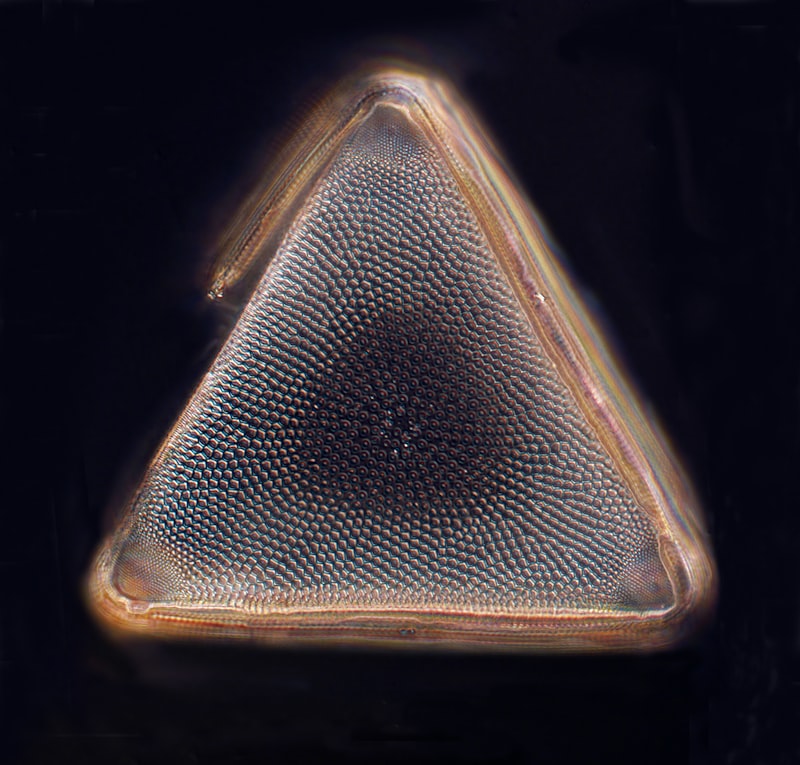Coral reefs are vibrant underwater ecosystems teeming with life, making them one of nature’s most breathtaking spectacles. Imagine a bustling city submerged beneath the waves, where each inhabitant plays a crucial role in maintaining the delicate balance of this underwater metropolis.
These reefs, often referred to as the “rainforests of the sea,” boast an astonishing array of biodiversity. From the smallest polyps to majestic sea turtles and elusive sharks, coral reefs harbor an unparalleled richness of marine life. It’s a world where tiny clownfish dart playfully among swaying anemone tentacles, while sleek rays glide gracefully over colorful coral formations.
What makes coral reefs truly remarkable is their structural diversity. They come in various shapes and sizes, from barrier reefs that stretch for miles along coastlines to atolls that form rings around lagoons. Each type creates unique habitats for different species, offering shelter, food, and breeding grounds crucial for marine survival.
But coral reefs aren’t just beautiful—they’re vital to our planet’s health. They protect shorelines from erosion and storm damage, provide livelihoods for millions through tourism and fisheries, and even hold potential cures for diseases in their undiscovered marine organisms.

Yet, these incredible ecosystems face unprecedented threats. Climate change, ocean acidification, overfishing, and pollution endanger their delicate balance. Bleaching events, where corals expel their colorful algae, serve as stark reminders of the urgent need for conservation efforts.
Beyond the Waves: Unveiling the Hidden Marvels of Coral Reefs
Coral reefs, often referred to as the rainforests of the sea, stand as some of the most biodiverse ecosystems on our planet. They are not just underwater landscapes but vibrant communities teeming with life and color. Imagine stepping into an underwater city where every corner reveals a new marvel waiting to be explored.
These intricate structures are built by tiny coral polyps over centuries, forming massive colonies that stretch for thousands of miles across oceans. Each reef becomes a bustling metropolis for a myriad of marine species—from the graceful sea turtles gliding through the clear waters to the dazzling schools of fish darting among the corals.
What makes coral reefs truly awe-inspiring is their ability to create habitats that support a quarter of all marine life. They are nature’s masterpiece, providing shelter, breeding grounds, and food for countless species. Picture a bustling market where every resident plays a crucial role in maintaining the delicate balance of this underwater ecosystem.
But beyond their ecological significance, coral reefs captivate with their stunning beauty. Imagine a kaleidoscope of colors: vivid blues, greens, purples, and oranges painted across the reef by millions of tiny creatures. It’s like wandering through an underwater garden where the corals themselves are the flowers, swaying gently with the rhythm of the sea.
However, these majestic wonders face unprecedented challenges today. Climate change, pollution, and overfishing threaten the very existence of coral reefs worldwide. The stark reality is that unless significant action is taken, we risk losing these invaluable ecosystems forever.
Yet, amidst the challenges, there is hope. Conservation efforts around the globe strive to protect and restore coral reefs, ensuring future generations can continue to marvel at their beauty and benefit from their ecological services. Imagine a future where these underwater cities thrive once more, bustling with life and color for all to cherish.
Colorful Kingdoms: A Journey into the Diverse World of Coral Reefs
Imagine diving into a world where colors dance and life thrives in breathtaking harmony. Welcome to the realm of coral reefs, nature’s kaleidoscope beneath the waves. Coral reefs, often referred to as the “rainforests of the sea,” are vibrant ecosystems teeming with an astonishing array of marine life. From the shallow waters of the tropics to the depths of the ocean, these underwater wonderlands captivate with their beauty and biodiversity.
At first glance, coral reefs appear as underwater cities built by tiny architects. These architects are corals, small organisms that come together to form vast colonies. Each coral polyp, no larger than a grain of rice, secretes a calcium carbonate skeleton that gradually builds over time. Together, these skeletons create the intricate structures we recognize as coral reefs.
The diversity found within coral reefs is unparalleled. They host a staggering variety of marine species, from the dazzling colors of tropical fish to the graceful movements of sea turtles and the majestic presence of sharks. Countless species depend on coral reefs for food, shelter, and breeding grounds, making them crucial hubs of marine life.
Yet, coral reefs are more than just a spectacle of biodiversity. They play a crucial role in maintaining the health of our oceans and supporting coastal communities. Reefs act as natural barriers, protecting coastlines from erosion and storm surges. They also contribute significantly to global fisheries, providing livelihoods for millions of people worldwide.
Despite their importance, coral reefs face unprecedented threats. Climate change, overfishing, pollution, and destructive fishing practices endanger these fragile ecosystems. Rising sea temperatures lead to coral bleaching, a phenomenon where corals expel the algae living in their tissues, causing them to turn white and potentially die.
Efforts to conserve coral reefs are more critical than ever. Conservation initiatives focus on reducing carbon emissions, establishing marine protected areas, and promoting sustainable fishing practices. Public awareness and engagement are also vital in protecting these invaluable ecosystems for future generations to enjoy.
Coral reefs are not only breathtaking natural wonders but also vital ecosystems that support a rich diversity of marine life. By understanding their importance and taking action to protect them, we can ensure that these colorful kingdoms continue to thrive beneath the waves.
Guardians of the Sea: Understanding the Ecological Importance of Coral Reefs
Imagine a bustling city underwater, where every structure, nook, and cranny is teeming with life. Coral reefs provide a habitat for an astonishing variety of marine organisms, from tiny fish and crustaceans to large predators like sharks and rays. This biodiversity is not just a spectacle for divers and snorkelers; it’s a testament to the intricate web of life that coral reefs support.
But their importance goes beyond being a biodiverse hotspot. Coral reefs act as natural barriers, protecting coastlines from erosion and buffering against the devastating impact of storms and tsunamis. They also contribute significantly to local economies through tourism, fisheries, and pharmaceutical discoveries.
However, coral reefs face unprecedented threats today. Climate change, ocean acidification, overfishing, and pollution are taking a toll on these delicate ecosystems. Rising sea temperatures cause coral bleaching, where corals expel the colorful algae living in their tissues, turning them ghostly white and vulnerable to disease.
The decline of coral reefs isn’t just an ecological tragedy; it’s a warning sign of broader environmental degradation. Every year, we lose more of these vital ecosystems, and with them, the services they provide to both marine life and humanity.
Understanding the ecological importance of coral reefs is not just about appreciating their beauty. It’s about recognizing their role as guardians of our seas and taking action to protect them. Conservation efforts, sustainable fishing practices, reducing carbon emissions, and creating marine protected areas are all crucial steps in safeguarding these irreplaceable ecosystems for future generations.
Coral Kaleidoscope: Discovering the Spectacular Variety of Reef Life
Coral reefs are not just underwater structures; they are bustling cities of biodiversity. Picture a bustling metropolis where every species plays a crucial role in the ecosystem. From the dazzling hues of parrotfish to the graceful sway of sea anemones, each organism contributes to the tapestry of life.
At the heart of this kaleidoscope are the corals themselves. These fascinating creatures build calcium carbonate skeletons over centuries, creating the framework for entire ecosystems. Within these structures, a myriad of species find shelter, food, and protection. It’s a delicate balance where each organism, no matter how small, has a part to play.

The reef’s residents are equally diverse. Schools of vibrant fish dart through the waters, their scales shimmering like jewels in the sunlight. In the shadows, stealthy predators like reef sharks patrol, reminding us of the wild beauty that lies beneath.
But it’s not just the larger inhabitants that make the reef a kaleidoscope of life. Tiny creatures, from colorful nudibranchs to microscopic plankton, form the base of the food chain. Their interactions create ripples of life that resonate throughout the ecosystem, sustaining everything from the smallest fish to the largest predators.

Yet, this intricate web of life is facing unprecedented challenges. Coral reefs worldwide are under threat from climate change, overfishing, and pollution. As temperatures rise and oceans become more acidic, corals struggle to survive. Their bleached skeletons stand as stark reminders of the urgent need for conservation efforts.
In the face of these challenges, there is hope. Conservationists, scientists, and communities around the world are working tirelessly to protect and restore coral reefs. Through research, education, and sustainable practices, we can ensure that future generations will continue to marvel at the kaleidoscope of life that thrives beneath the waves.
The coral kaleidoscope is a testament to the beauty and resilience of nature. It’s a reminder that our actions today will shape the future of these fragile ecosystems. So, let’s dive in, explore, and protect the spectacular variety of reef life that enriches our planet.
Ecosystem Wonders: The Intricate Balance of Coral Reef Biodiversity
Imagine coral reefs as bustling cities, where every resident, from the tiny fish darting between corals to the majestic sea turtles gliding above, has a vital part to play. The intricate web of life here ensures that nutrients flow, species interact, and habitats thrive. It’s a living example of nature’s interconnectedness at its finest.
At the heart of coral reef biodiversity are the corals themselves, tiny polyps that build calcium carbonate skeletons, forming vast underwater structures over centuries. These corals provide shelter and breeding grounds for countless marine organisms, from fish to crustaceans, creating a bustling metropolis beneath the waves.
But the wonder doesn’t stop there. Coral reefs also act as natural barriers, protecting coastlines from erosion and buffering the impact of storms. They are invaluable to coastal communities, providing livelihoods through fisheries and tourism, while also contributing to global biodiversity and scientific research.
However, these ecosystems face unprecedented challenges today. Climate change, pollution, overfishing, and coastal development threaten their existence. As temperatures rise, corals expel the symbiotic algae living within their tissues, leading to coral bleaching—a stark indicator of environmental stress.
Efforts are underway worldwide to conserve and restore coral reefs. Marine protected areas, sustainable fishing practices, and coral propagation techniques offer hope for their future. Through global cooperation and local action, we can safeguard these biodiversity hotspots for generations to come.
Secrets of Survival: How Coral Reefs Adapt to Changing Environments
Imagine a bustling metropolis teeming with life, where each inhabitant plays a crucial role in maintaining the delicate balance of its ecosystem. Coral reefs are just that – vibrant communities where corals, fish, and myriad marine creatures coexist in harmony. But what makes these reefs so resilient in the face of environmental changes?
One of the key secrets lies in the symbiotic relationship between corals and algae. Corals provide shelter and a safe haven for algae, known as zooxanthellae, which in turn provide corals with essential nutrients through photosynthesis. This mutually beneficial partnership allows corals to thrive in nutrient-poor waters, maintaining their brilliant colors and structural integrity.
Yet, coral reefs face numerous threats, from rising ocean temperatures and pollution to ocean acidification. These stressors can disrupt the delicate balance of the coral-algae symbiosis, causing corals to expel their algae and turn white, a phenomenon known as coral bleaching. While bleached corals aren’t dead, they are under immense stress and more susceptible to disease and death if the stress persists.
In response to environmental changes, some corals exhibit astonishing adaptive strategies. They can produce different types of proteins to withstand higher temperatures or change their skeletal structure to adapt to varying pH levels in seawater. These adaptations, honed over millions of years of evolution, highlight the resilience and ingenuity of coral reef ecosystems.
Protecting coral reefs is crucial not only for their biodiversity but also for the millions of people who depend on them for food, coastal protection, and tourism revenue. Conservation efforts, including marine protected areas, sustainable fishing practices, and reducing carbon emissions, are essential to safeguarding these invaluable ecosystems for future generations.
Frequently Asked Questions
How can we contribute to conserving coral reef diversity?
Learn how you can actively contribute to conserving coral reef diversity with these actionable steps and practices. Discover practical ways to reduce pollution, support sustainable fishing practices, and advocate for marine conservation efforts in your community. Start making a positive impact on coral reefs today!
What makes coral reefs so diverse?
Discover why coral reefs are incredibly diverse ecosystems due to their complex structures that provide habitats for countless species. Their unique conditions of warm, clear waters and symbiotic relationships with algae contribute to a rich biodiversity.
Where are the most diverse coral reefs located?
Discover the locations of the world’s most diverse coral reefs with our concise guide. Explore key regions renowned for their rich coral biodiversity and learn about their ecological significance.
What threats do coral reefs face to their diversity?
Explore the various threats endangering coral reef diversity, including climate change, ocean acidification, overfishing, pollution, and coral bleaching.
How do coral reefs support marine life diversity?
Discover how coral reefs foster marine biodiversity through their complex habitats, offering shelter, food, and breeding grounds for a wide array of marine species.


